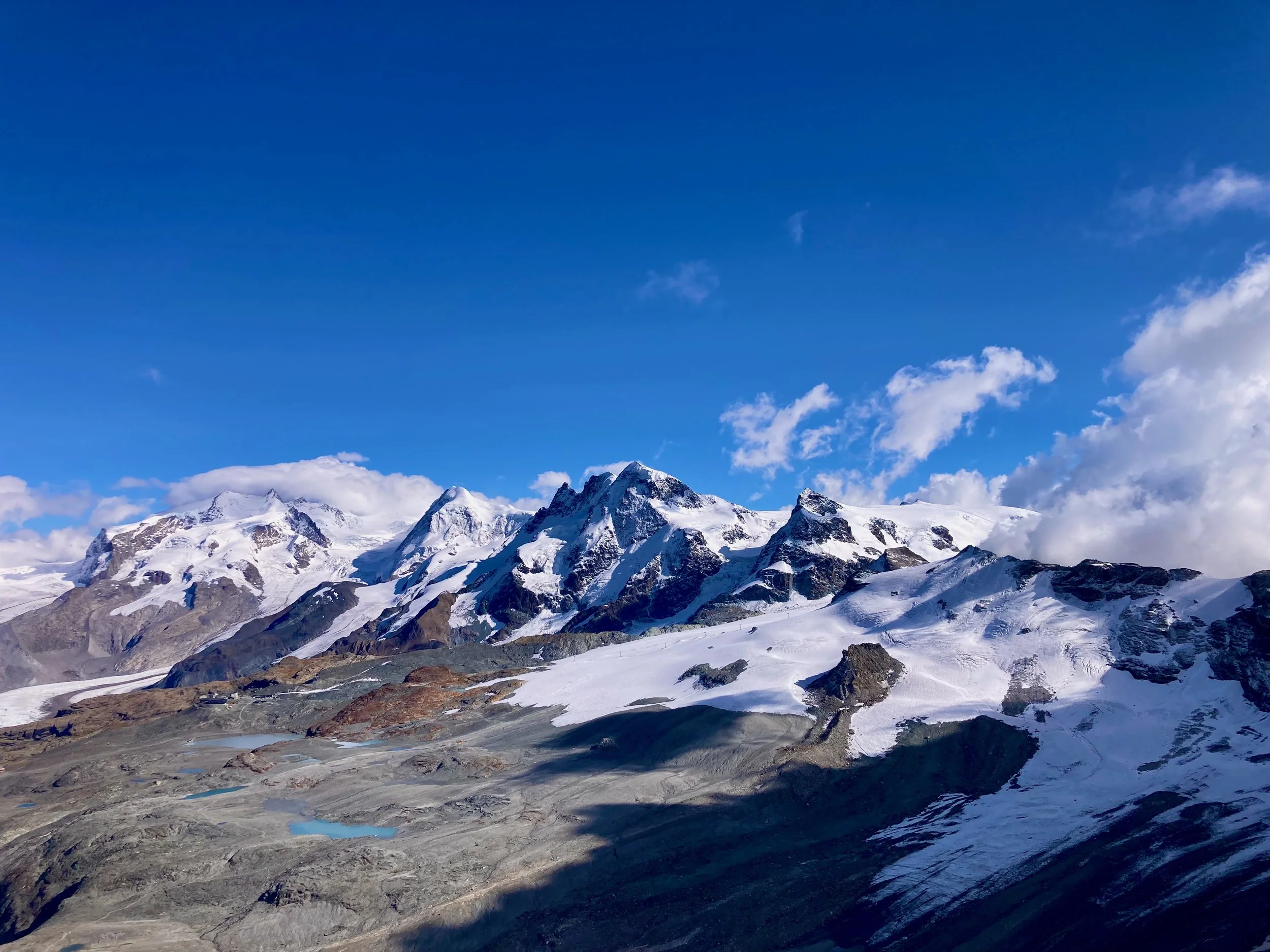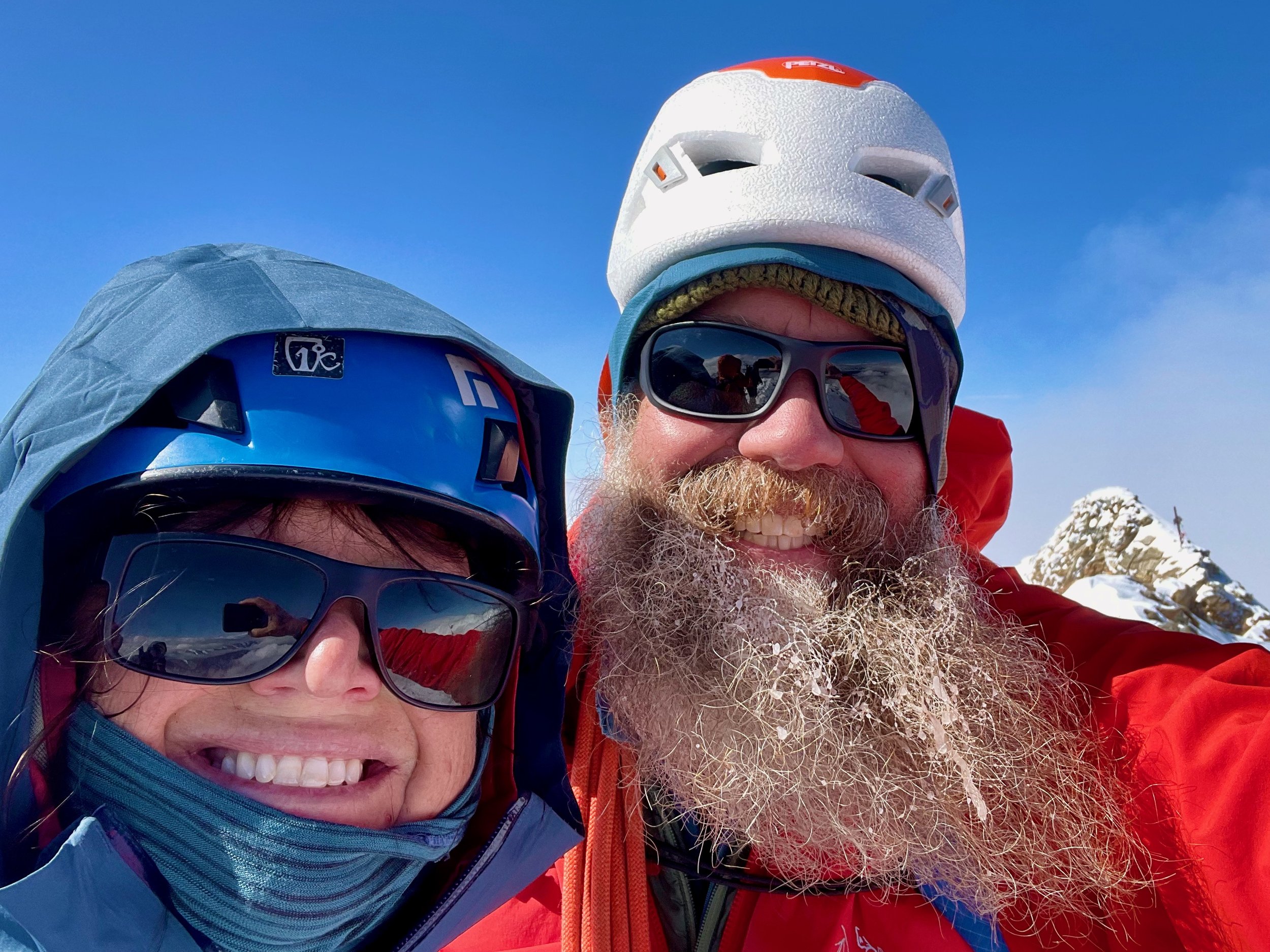Lessons Learned on the Matterhorn
When I greeted the Hörnlihütte warden on Thursday morning, he asked, “What the hell did you learn of the Matterhorn?”
Fair question. This is what I told him:
First, acclimation has to happen. Like most people, I live at a low elevation, about 200m / 650ft. When we arrived in Zermatt, we were faced with unstable weather and the Hornlihutte closing early on Thursday instead of Sunday. We decided to accelerate our schedule, climbed the Breithorn half-traverse on Monday and then immediately hike up to the Hornlihutte at 3200m on Tuesday. We knew the elevation was going to kick our asses but we didn’t appreciate just how much that would slow us down. The irony is that the Zermatt and Saas valleys have a lifetime of excellent climbs at elevations lower than 4000m - we were so committed to tagging the Matterhorn we didn’t want to give it up. That was an extremely bad idea, and I won’t push an itinerary like this again. My recommendation: take full advantage of a week to get over your travel and get acclimatized before tackling the Matterhorn. If the weather or route conditions are preventing that, just go climb something else - there are plenty of fantastic options!
Second, routefinding can’t be taken lightly. I didn’t appreciate how climbing in mid-summer with the crowds actually helped my routefinding as a visiting guide, versus this trip, when we were one of only six teams on the mountain. The most challenging routefinding is between the Japenese Couloir at 3400m and the “bright rock band” at 3650m. During the ascent, most of this is accomplished in the dark of the early morning, so it’s hard to spot landmarks to help on your return. On our approach day, we climbed up to the Japanese Couloir - which helped a little but not near enough. The day before the summit attempt I’d like to have an earlier start in Zermatt and hike to the Hörnlihütte in the morning, then spend the afternoon climbing to 3700-3800m or so just to get some comfort and familiarity with the route and the conditions. That’s something any team, guided or not, could do too.
Third, let technology help. The local guides average 6-12 Matterhorn ascents a summer, giving them an intimate familiarity with the route that’s difficult for non-guiding climbers or visiting guides to compete with. I’m getting over my Gen X analog tendencies and leaning on technology to help me. I’ll use my favorite app - CalTopo - to save a track and drop pins at significant points as I ascend.
Finally, equipment helps but doesn’t replace technique. I’m really happy with my equipment list for this trip. Kirah did discover that her leather waterproofed Kinko ski gloves didn’t grip the fixed ropes well - my Black Diamond gloves worked great, but I noticed the thicker gloves prevented a stronger grip. I do wish I had brought a short sling for a locking carabiner to make some of the lowers and counter rappels quicker to rig. Also, a 40m rope would have been more convenient in a few instances than the 30m I brought.
Not to intentionally hide the story, but last Wednesday Kirah and I tagged to Matterhorn summit for our first anniversary. But it took far longer than we expected, especially with my previous experience on the mountain. After all this, I told Martin and Sondra that I’m looking forward to coming back next year and doing better. They laughed, slapped me on the shoulders, and said they looked forward to seeing me again.

















